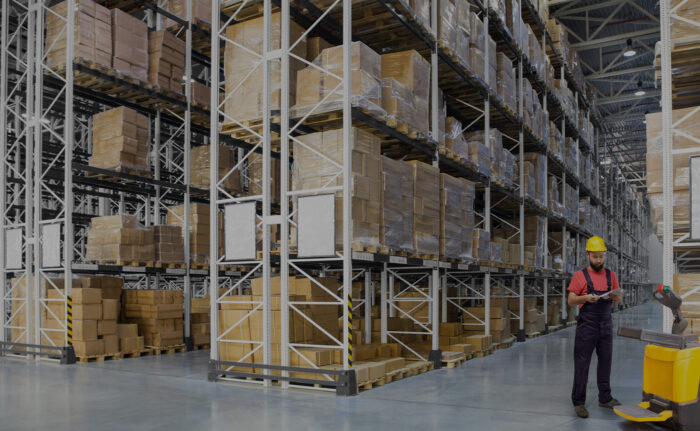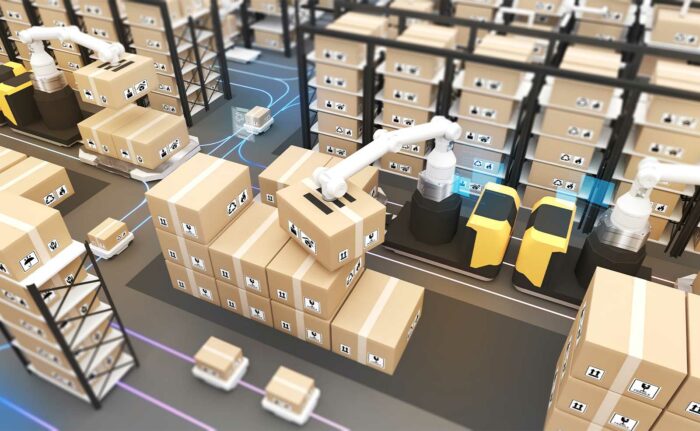You Have a Smart Phone, But Do You Have a Smart Warehouse?
In today’s tech-savvy world, almost everything we use from doorbells to refrigerators to diapers and basketballs now come equipped with smart technology. These smart devices are designed to provide information at our fingertips and to make life easier, to make us more productive, and to help us perform better. Many industries were quick to listen to the siren call of new technology, but the supply chain’s adoption of tech solutions was slower. However, in the past few years, unprecedented demand, labor shortages and major disruptions have pushed more companies to take action to embrace software, automation, robotics and other technologies across their supply chains.
With those advances, we now have smart warehouses. And their goal is very close to the other smart things in our lives: to make things easier, improve productivity, and improve performance.
What’s a Smart Warehouse?
A smart warehouse is a warehouse designed to work at peak efficiency to address unprecedented demand through some combination of software systems, IoT related devices, process improvements, and other technologies like automation and robotics.
There’s no hard-and-fast designation that makes one warehouse smart and another…not as smart. Many warehouses today embrace smart technologies, but the level of automation and interconnection may be different. Some warehouses are almost completely automated with AMR’s (autonomous mobile robots), AGV’s and Material Handling Equipment doing much of the processes of picking, replenishment, packing and shipping, while others are using technology to facilitate digital tracking and inventory control. Both ends of the spectrum can still be considered smart warehouses.
Common Smart Warehouse Component
WMS
The WMS or warehouse management system is the sun at the center of the smart warehouse universe. It helps tie all the other components of the smart warehouse together, aggregating data, providing real-time visibility, and driving the improvement of processes and operational efficiencies that can help meet unprecedented demand.
Automation
Automation is the application of equipment to automate tasks previously handled by people, such as automated storage and retrieval systems. Almost all smart warehousing operations use some form of automation or another, and some are nearly completely automated.
Robotics
While, unfortunately, most warehouse robots don’t look like our Saturday morning cartoons told us they would, they can help increase productivity and accuracy in smart warehousing operations. There are several different types of robots, including Autonomous Mobile Robots, Automated Guided Vehicles and Drones, to name a few.
Internet of Things
Carefully tracking inventory in real-time is often one of the first smart warehouse upgrades many companies choose to make. The implementation of sensors, RFID tags and scanners (both manual and automated) allow for automated tracking and transmission of inventory information. This technology isn’t brand new, but it’s gotten more refined over the past several years. This technology helps us in creating “big data” and drive better results in the implementation of AI and ML.
AI and ML
Both artificial intelligence (AI) and machine learning (ML) play a role in making smart warehouses even smarter by turning real-time information, historical data and other pertinent information into actionable advice to help drive smarter decision making and leaner processes to assist in addressing unprecedented demand.
WCS
A WCS or warehouse control system is a software program that serves as a kind of bridge between warehouse software and material equipment like pick to light and VLM’s and carousels. It is used to manage the specific equipment and fulfil the downstream instructions that are driven from the WMS. Sometimes a WCS is part of a WMS, but often times it is a separate solution.
Traits the Best Smart Warehouses Share
Agility
Since the goal of a smart warehouse is to work at peak efficiency, it needs to be able to bend and flex to accommodate the ever-changing landscape in the average logistics operation in the modern world. Smart warehouses and the systems that create them should display a great deal of agility. One way to gain agility in the smart warehouse? Opting to use modern, configurable software that provides the ability to pivot and shift gears with you as your business changes to keep operational costs down and leave a pathway to quick change.
Scalability
In order for smart warehouse operations to support a growing business, they’ll need to be scalable. They should be able to adapt to increased levels of complexity and handle higher order and inventory volumes with aplomb.
Visibility
To understand how to improve operations, you have to be able to truly see operations. Visibility is critical to success in today’s fast-paced supply chain. Visibility is an especially important part of keeping smart warehousing operations running because of the way components are connected. You have to be able to get a top-down view to know what’s going right and what’s going wrong so you can make adjustments.
Connectivity
The systems that combine to make up a smart warehouse must be able to seamlessly communicate with each other well and they must be able to feed stakeholders with relevant data. Data and commands should be able to flow freely between each necessary smart component. Customer-facing data, like inventory information, is ideally transferred around the clock.
Final Thoughts
Transitioning to smart warehousing is more the rule than the exception in this day and age, but the speed and trajectory of this transition will vary from one operation to the next. What is your current state of operation? Is your workforce struggling to keep up with demand? How much could be gained by improving efficiency, productivity, throughput and customer satisfaction? The answers to all these questions will factor into when and how extensively a company deploys new smart technologies.
Considering implementing new smart warehouse technologies? Reach out to the team at Made4net for a demo.



